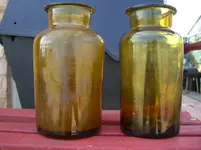chong2
Bronze Member
- Joined
- Apr 25, 2006
- Messages
- 2,041
- Reaction score
- 141
- Golden Thread
- 0
- Location
- El Paso, TX
- Detector(s) used
- Flippin Stick n good luck :)
- #1
Thread Owner
does anyone have info on this this jar came from a lot i dug the other day, i have maybe 2 others like it from the same lot, the lot contained apocarth and chem bottles from around late 1800's from a old mining town. there are no seams period on this guy. no makers marks, very very few bubbles. there is however a 500 embossed on the base pretty large. where the embossing is it has the indentation of a square about 1/4 of a in in the base, my guess is grams, i dont think cc would be on a jar. i hope the picks will help.
this jar came from a lot i dug the other day, i have maybe 2 others like it from the same lot, the lot contained apocarth and chem bottles from around late 1800's from a old mining town. there are no seams period on this guy. no makers marks, very very few bubbles. there is however a 500 embossed on the base pretty large. where the embossing is it has the indentation of a square about 1/4 of a in in the base, my guess is grams, i dont think cc would be on a jar. i hope the picks will help.
 this jar came from a lot i dug the other day, i have maybe 2 others like it from the same lot, the lot contained apocarth and chem bottles from around late 1800's from a old mining town. there are no seams period on this guy. no makers marks, very very few bubbles. there is however a 500 embossed on the base pretty large. where the embossing is it has the indentation of a square about 1/4 of a in in the base, my guess is grams, i dont think cc would be on a jar. i hope the picks will help.
this jar came from a lot i dug the other day, i have maybe 2 others like it from the same lot, the lot contained apocarth and chem bottles from around late 1800's from a old mining town. there are no seams period on this guy. no makers marks, very very few bubbles. there is however a 500 embossed on the base pretty large. where the embossing is it has the indentation of a square about 1/4 of a in in the base, my guess is grams, i dont think cc would be on a jar. i hope the picks will help.


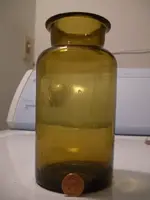
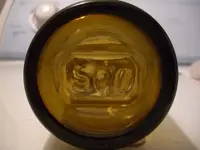
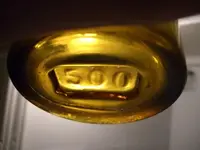
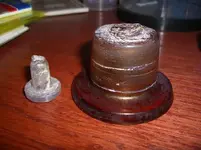
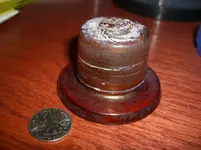
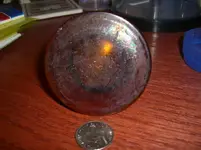
 i did not know that some owens do not have side seams thanks for the info. thanks for the links too.
i did not know that some owens do not have side seams thanks for the info. thanks for the links too.
